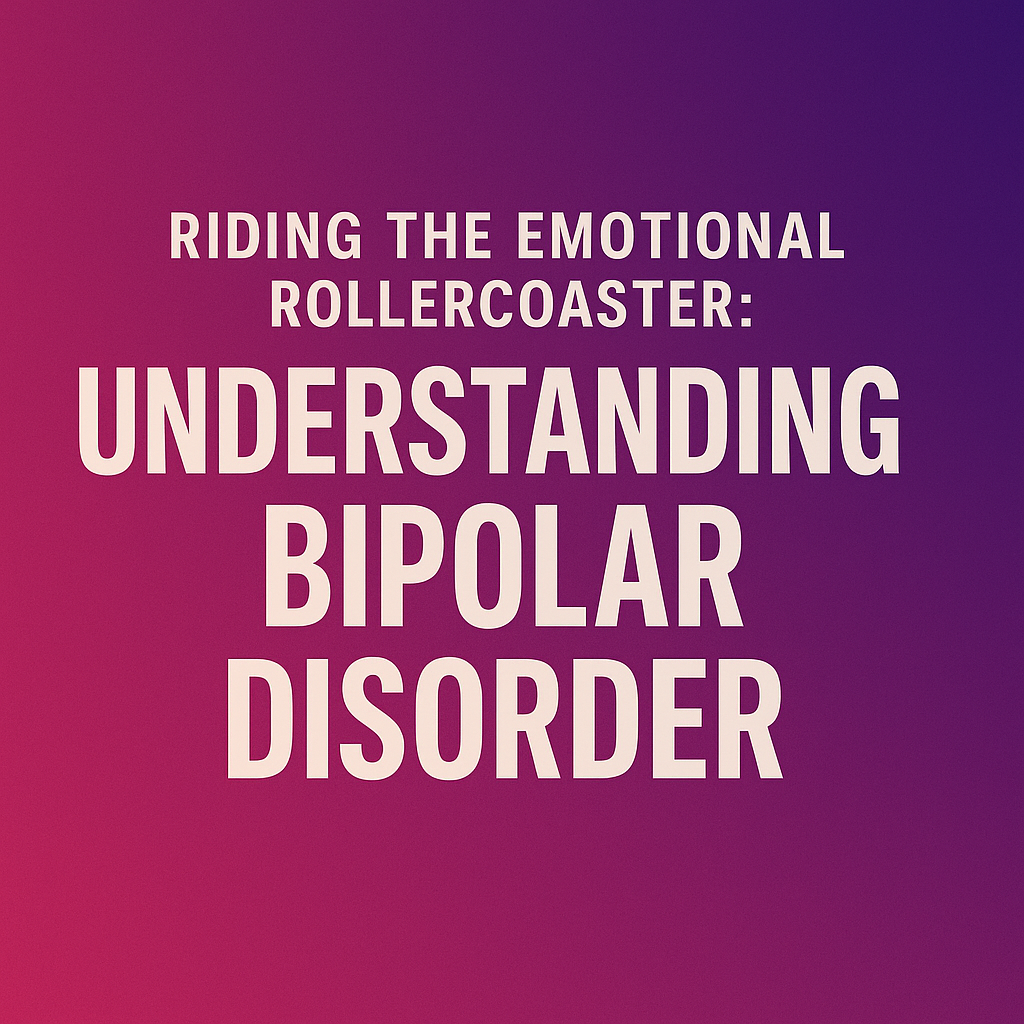Navigating the Highs and Lows
Bipolar disorder isn’t just about mood swings; it’s a complex mental health condition that affects millions worldwide. Characterized by extreme shifts in mood, energy, and activity levels, it can disrupt daily life and relationships. Understanding bipolar disorder is the first step toward managing it effectively.
What Is Bipolar Disorder?
Bipolar disorder, formerly known as manic depression, is a mental health condition marked by extreme mood swings that include emotional highs (mania or hypomania) and lows (depression). These episodes can affect sleep, energy levels, behavior, and the ability to think clearly. According to the Mayo Clinic, these mood swings can occur rarely or multiple times a year.
Types of Bipolar Disorder
Understanding the different types of bipolar disorder is crucial for accurate diagnosis and treatment. As outlined by Mind, the main types include:
-
Bipolar I Disorder: Characterized by at least one manic episode, possibly followed by hypomanic or depressive episodes.
-
Bipolar II Disorder: Involves at least one major depressive episode and at least one hypomanic episode, but no full manic episodes.
-
Cyclothymic Disorder (Cyclothymia): Periods of hypomanic symptoms and periods of depressive symptoms lasting for at least two years (one year in children and adolescents), but the symptoms do not meet the diagnostic requirements for a hypomanic episode and a depressive episode.
-
Other Types: Includes bipolar and related disorders induced by certain drugs or alcohol or due to a medical condition.
Causes and Risk Factors
The exact cause of bipolar disorder is unknown, but several factors may contribute:
-
Genetics: Having a first-degree relative with bipolar disorder increases the risk.
-
Biological Differences: People with bipolar disorder appear to have physical changes in their brains.
-
Neurotransmitter Imbalance: Imbalances in brain chemicals may play a significant role.
-
Environmental Factors: Stress, abuse, or traumatic experiences can trigger or exacerbate symptoms.Conway Behavioral Health Hospital+1Mayo Clinic+1Verywell Health
These factors interact differently in each individual, making bipolar disorder a highly personal experience. Healthline provides an in-depth look at these causes.Healthline
Symptoms of Bipolar Disorder
Bipolar disorder symptoms vary but commonly include:
-
Manic/Hypomanic Episodes:
-
Elevated mood or irritability
-
Increased activity or energy
-
Decreased need for sleep
-
Racing thoughts
-
Impulsive or risky behaviorVerywell Mindblackdoginstitute.org.au
-
-
Depressive Episodes:
-
Persistent sadness or hopelessness
-
Loss of interest in activities
-
Fatigue or low energy
-
Feelings of worthlessness or guilt
-
Thoughts of death or suicide
-
Recognizing these symptoms early can lead to timely intervention. The National Institute of Mental Health offers a comprehensive overview of bipolar disorder symptoms.National Institute of Mental Health
Diagnosis: How Is Bipolar Disorder Identified?
Diagnosing bipolar disorder involves a thorough evaluation by a healthcare professional, including:
-
Clinical Interviews: Discussing symptoms, history, and functioning.
-
Physical Exams: Ruling out medical causes.
-
Psychological Assessments: Evaluating mood patterns and behaviors.Verywell Mind
Early diagnosis is key to effective treatment. The Mayo Clinic outlines the diagnostic process.Mayo Clinic
Treatment Options
Effective treatments for bipolar disorder include:
-
Medications: Mood stabilizers, antipsychotics, and antidepressants.
-
Psychotherapy: Cognitive-behavioral therapy (CBT), family-focused therapy.
-
Lifestyle Changes: Regular exercise, healthy diet, and sleep hygiene.
-
Support Networks: Joining support groups and educating family members.NAMI+1aafp.org+1PMC
Treatment plans should be individualized, considering the person’s specific needs and preferences. NAMI offers guidance on managing bipolar disorder.NAMI
Living with Bipolar Disorder
Living with bipolar disorder requires ongoing management and support. Many individuals lead fulfilling lives by adhering to treatment plans, maintaining healthy routines, and seeking support when needed. Open communication with healthcare providers and loved ones is essential. Verywell Health provides resources for those living with bipolar disorder.Verywell Health
Support and Resources
If you or someone you know is struggling with bipolar disorder, help is available:
-
NAMI HelpLine: 1-800-950-NAMI (6264)
-
Crisis Text Line: Text HOME to 741741
-
SAMHSA’s National Helpline: 1-800-662-HELP (4357)
-
988 Suicide & Crisis Lifeline: Call or text 988
These resources offer free, confidential support 24/7. Visit NAMI and Crisis Text Line for more information.
You’re Not Alone
Bipolar disorder is a challenging but manageable condition. With the right support, treatment, and self-care, individuals can lead stable and fulfilling lives. Remember, seeking help is a sign of strength, not weakness. You’re not alone, and brighter days are ahead.
Related Posts:







One thought on “Riding the Emotional Rollercoaster: Understanding Bipolar Disorder”